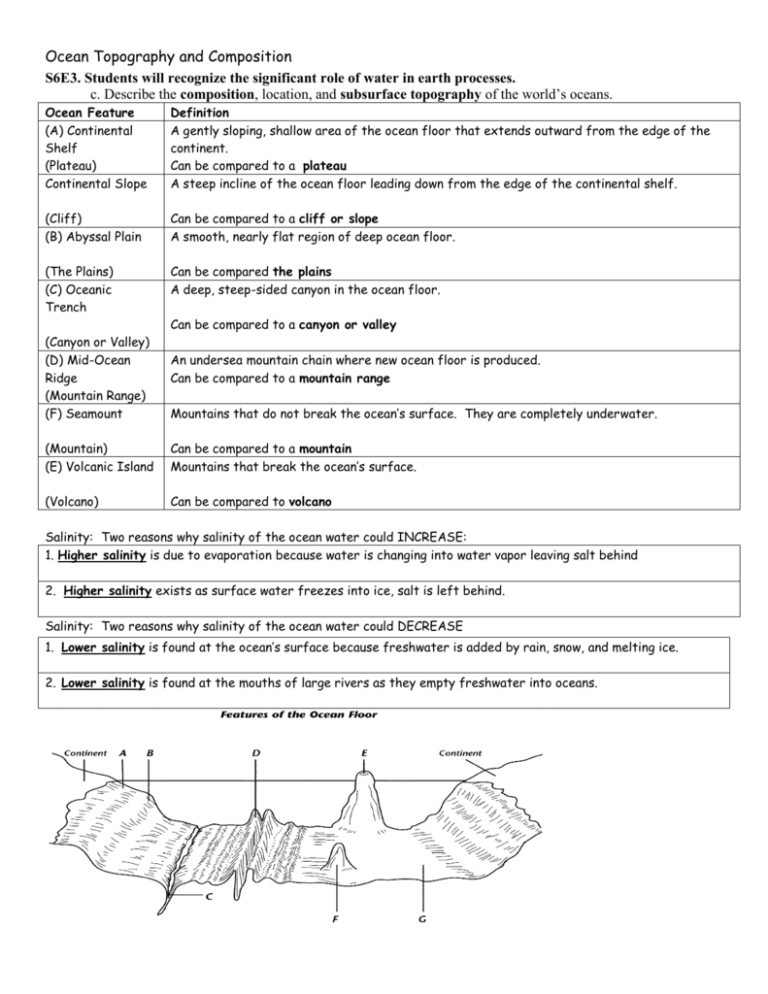Ocean Topography and Composition
advertisement

Ocean Topography and Composition S6E3. Students will recognize the significant role of water in earth processes. c. Describe the composition, location, and subsurface topography of the world’s oceans. Ocean Feature (A) Continental Shelf (Plateau) Continental Slope Definition A gently sloping, shallow area of the ocean floor that extends outward from the edge of the continent. Can be compared to a plateau A steep incline of the ocean floor leading down from the edge of the continental shelf. (Cliff) (B) Abyssal Plain Can be compared to a cliff or slope A smooth, nearly flat region of deep ocean floor. (The Plains) (C) Oceanic Trench Can be compared the plains A deep, steep-sided canyon in the ocean floor. Can be compared to a canyon or valley (Canyon or Valley) (D) Mid-Ocean Ridge (Mountain Range) (F) Seamount An undersea mountain chain where new ocean floor is produced. Can be compared to a mountain range Mountains that do not break the ocean’s surface. They are completely underwater. (Mountain) (E) Volcanic Island Can be compared to a mountain Mountains that break the ocean’s surface. (Volcano) Can be compared to volcano Salinity: Two reasons why salinity of the ocean water could INCREASE: 1. Higher salinity is due to evaporation because water is changing into water vapor leaving salt behind 2. Higher salinity exists as surface water freezes into ice, salt is left behind. Salinity: Two reasons why salinity of the ocean water could DECREASE 1. Lower salinity is found at the ocean’s surface because freshwater is added by rain, snow, and melting ice. 2. Lower salinity is found at the mouths of large rivers as they empty freshwater into oceans.






